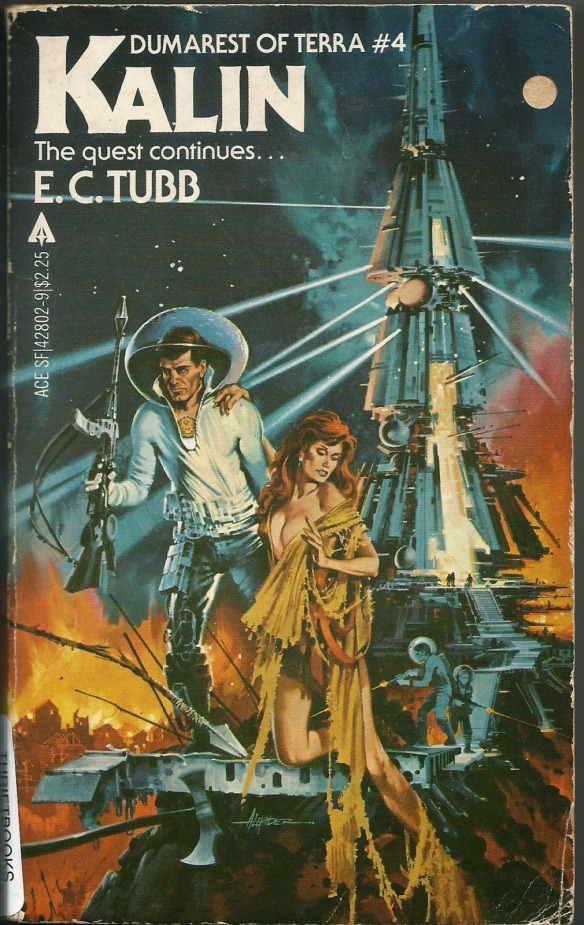
Over at his blog, Jeffro Johnson has a post about the SF literature that inspired the expectations and play of early roleplaying games. He mentions thee science-fiction books by title, each linking to a writeup he’s already done of them.
- RETROSPECTIVE: A Spaceship for the King by Jerry Pournelle
- RETROSPECTIVE: City of Chasch by Jack Vance
- RETROSPECTIVE: Kalin by E. C. Tubb
He writes:
If you take some time to read what the early rpg designers had read, you will see that they almost compulsively lifted material from pulp and new wave writers. The most surprising thing about this is the extent to which they passed over the grand masters of Campbellian science fiction. The authors that are synonymous with the field seemed to hold not one iota of attraction or influence to them. Mike Mearls thinks almost entirely in terms of television and movies. These things had a negligible impact on the first wave of rpg designers. For them it was short stories and novellas and short novels from dozens of authors that were primary. There was no “big three” for them [Asimov, Heinlein, Clarke]: they read everything they could get their hands on.
In particular, the tales that inspired early RPGs (books by Edgar Rice Burroughs, Jack Vance, Robert E. Howard, and countless others) were never about one definitive setting, obsessed with the defining the top-down organization and structure like some OCD gazetteer. Instead, the larger setting (if there was one) served to hold countless settings within it.
This notion of many settings, not a single setting, is one of the key ideas one takes away by sinking into these books. That is to say, obsessing about “the setting” of your Traveller game was never what Traveller was about. If you look at all the pieces found in the Traveller, you find that it encouraged going to one unique, exotic world, and then another unique, exotic world, and then another unique, exotic world.
In original Traveller, each world was a setting. A single subsector held a lot of settings! That’s why the 1977 rules stated that one or two subsectors created by the Referee would be enough for months, if not years, of play.
The Player Characters might have come from one particular civilization or society, but that place did not matter. That was the past. That was “back that way…” What mattered once play began is where your characters were going. That’s where adventure waited. World by world, setting by setting…
As Jeffro notes:
Read them for yourself and you’ll see: the authors that inspired the rpg designers in the seventies don’t just provide an unparalleled entertainment value. They are also a perfect fit for tabletop gaming and will change the way they you view both science fiction and science fiction gaming.

Pingback: SENSOR SWEEP: Political Agendas, Vapid Nonsense, Screen Misogyny, and Boring Things – castaliahouse.com
It’s a shame the final Dumarest book is so hard to find at a reasonable price…I’ve read everything but that one.
This post reminds me why it’s so hard to get a satisfying game together nowadays, at least for me…so many players I meet just want to recreate TV shows and movies and have preconceived character notions derived from same…